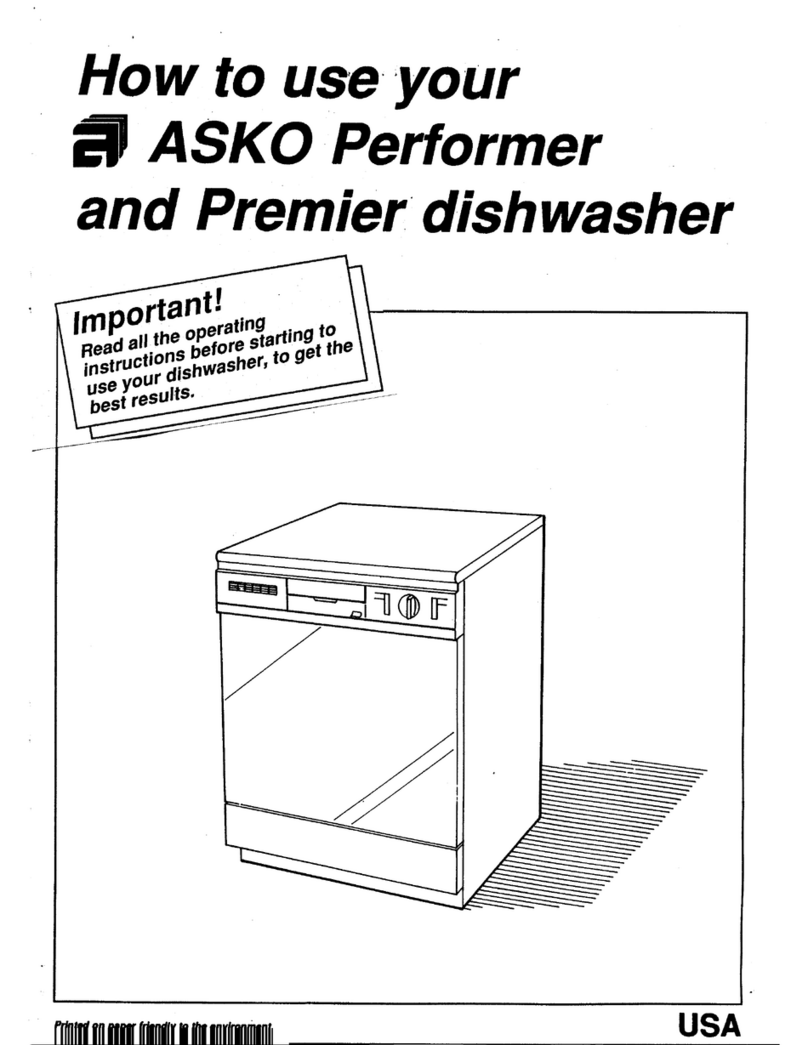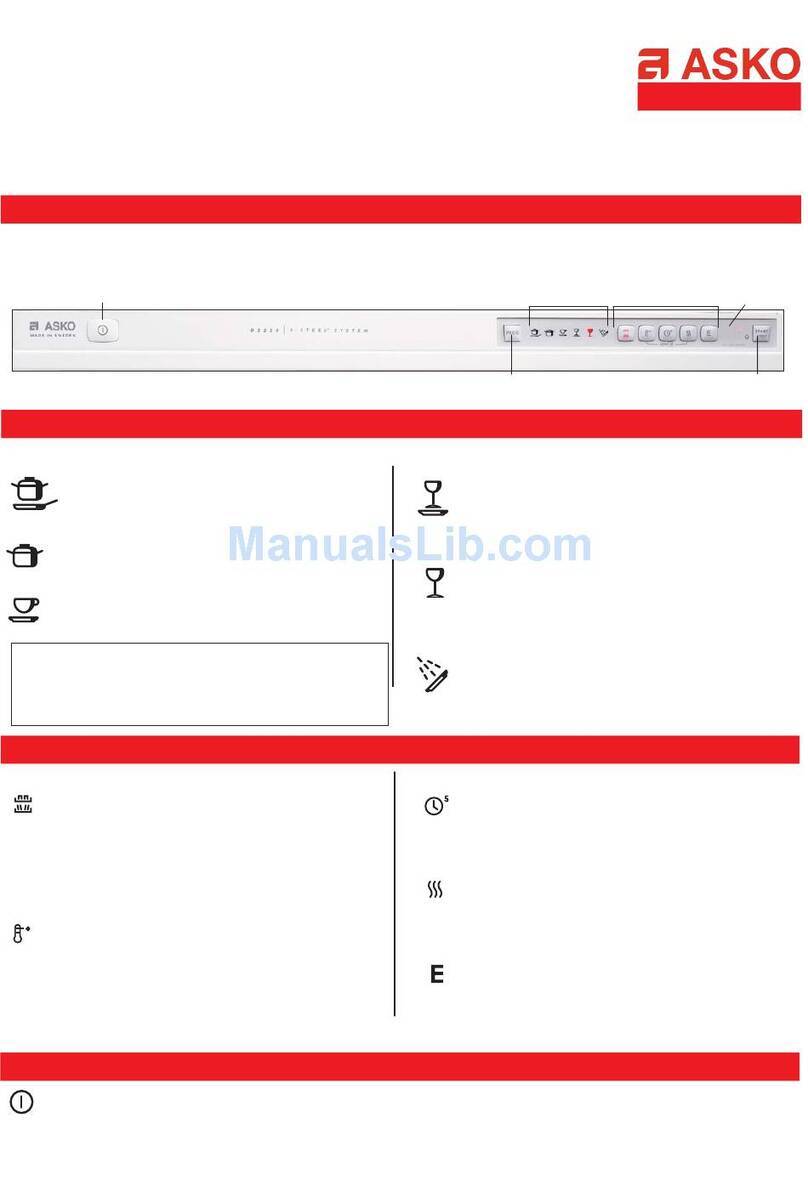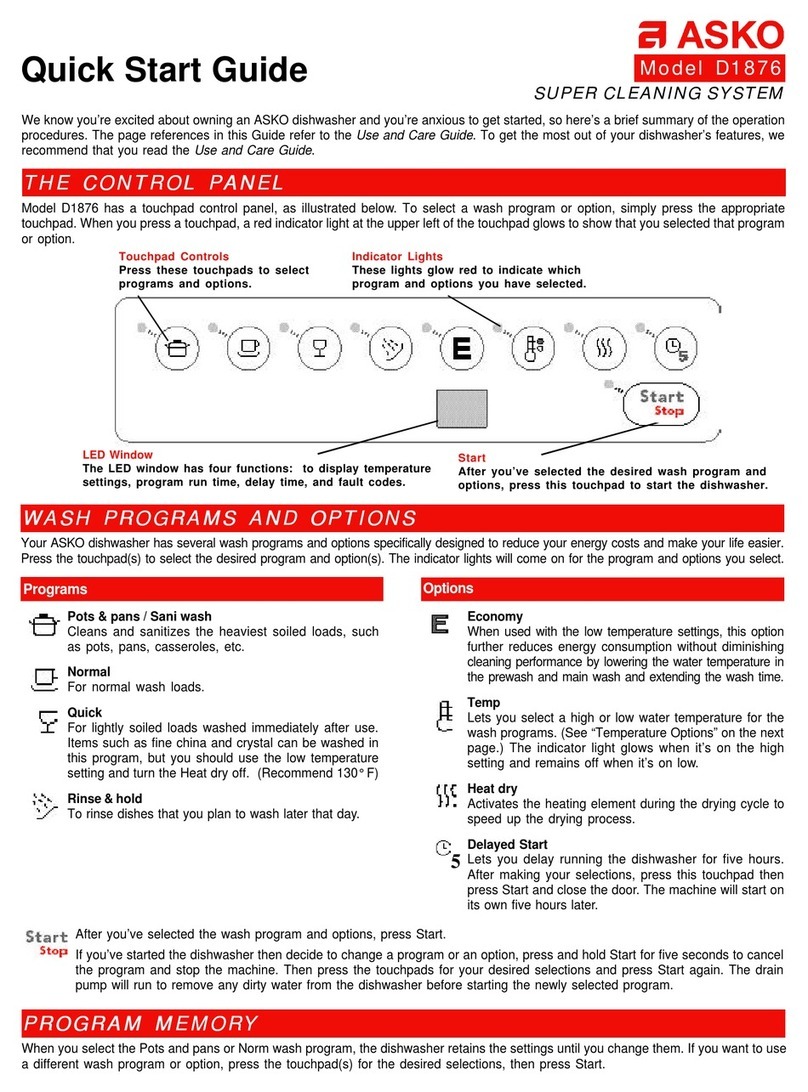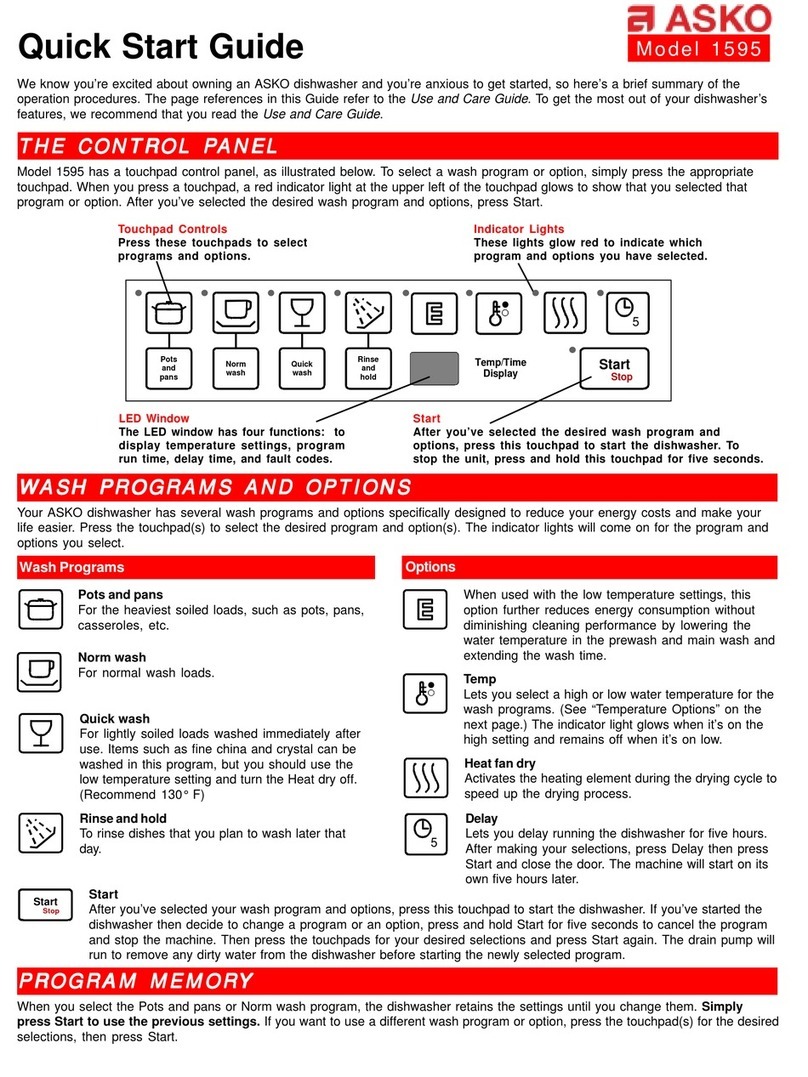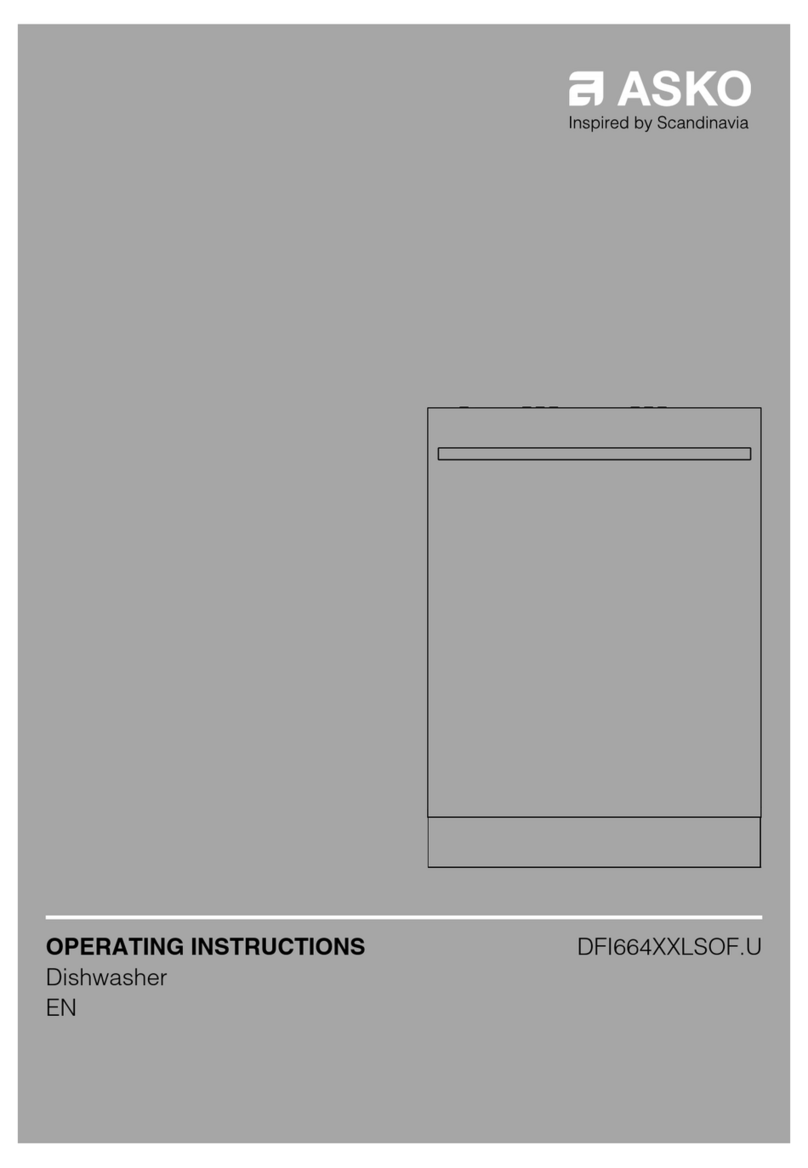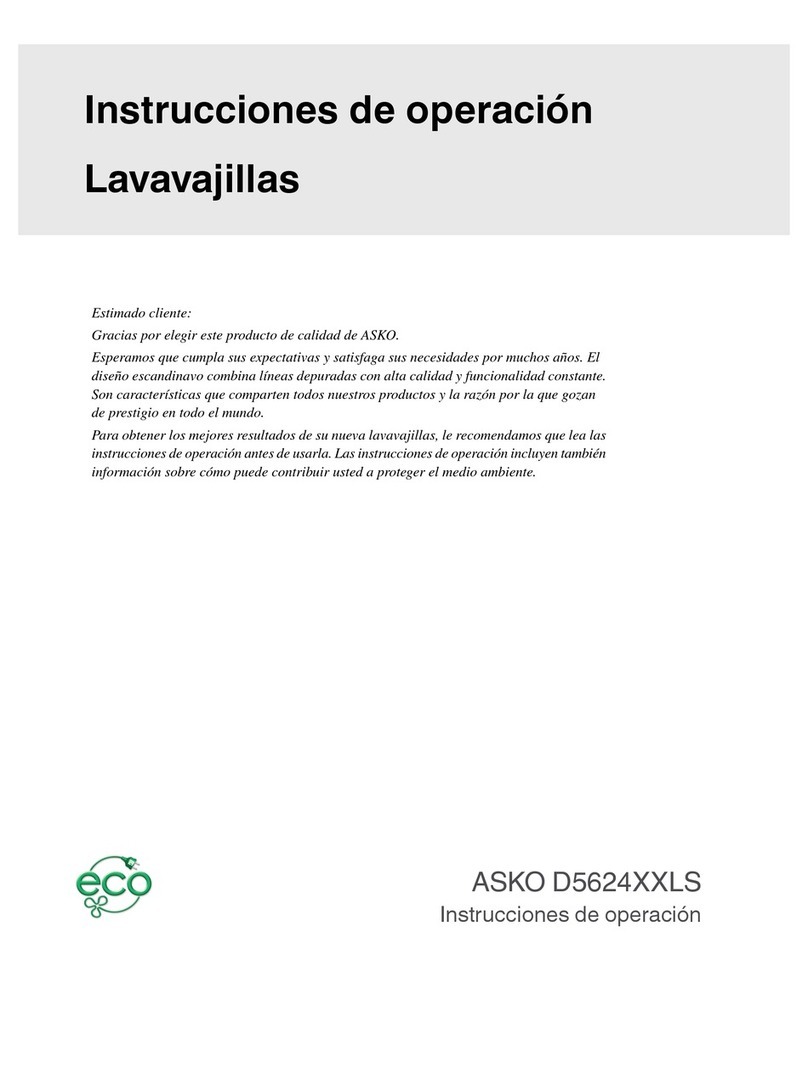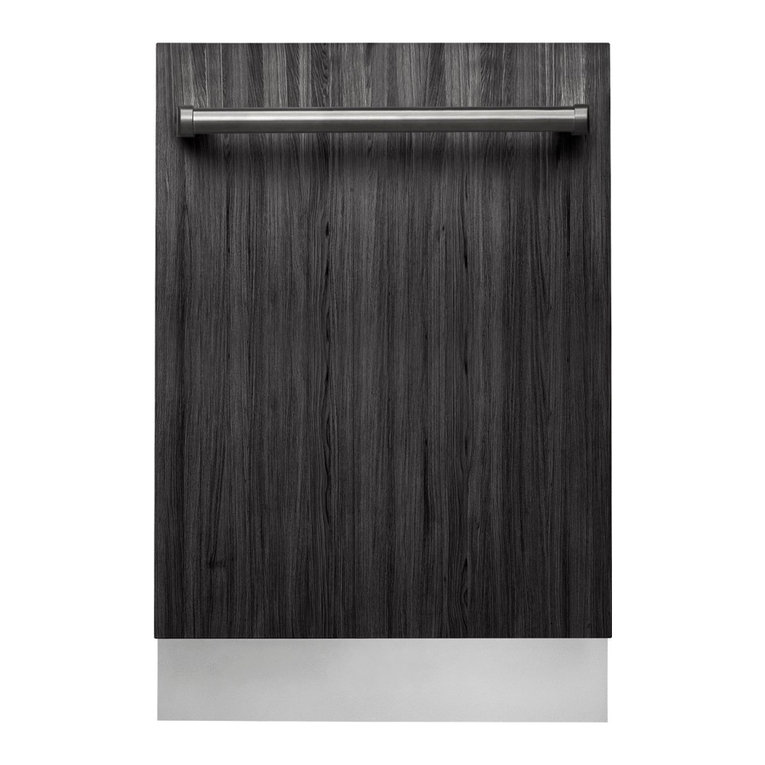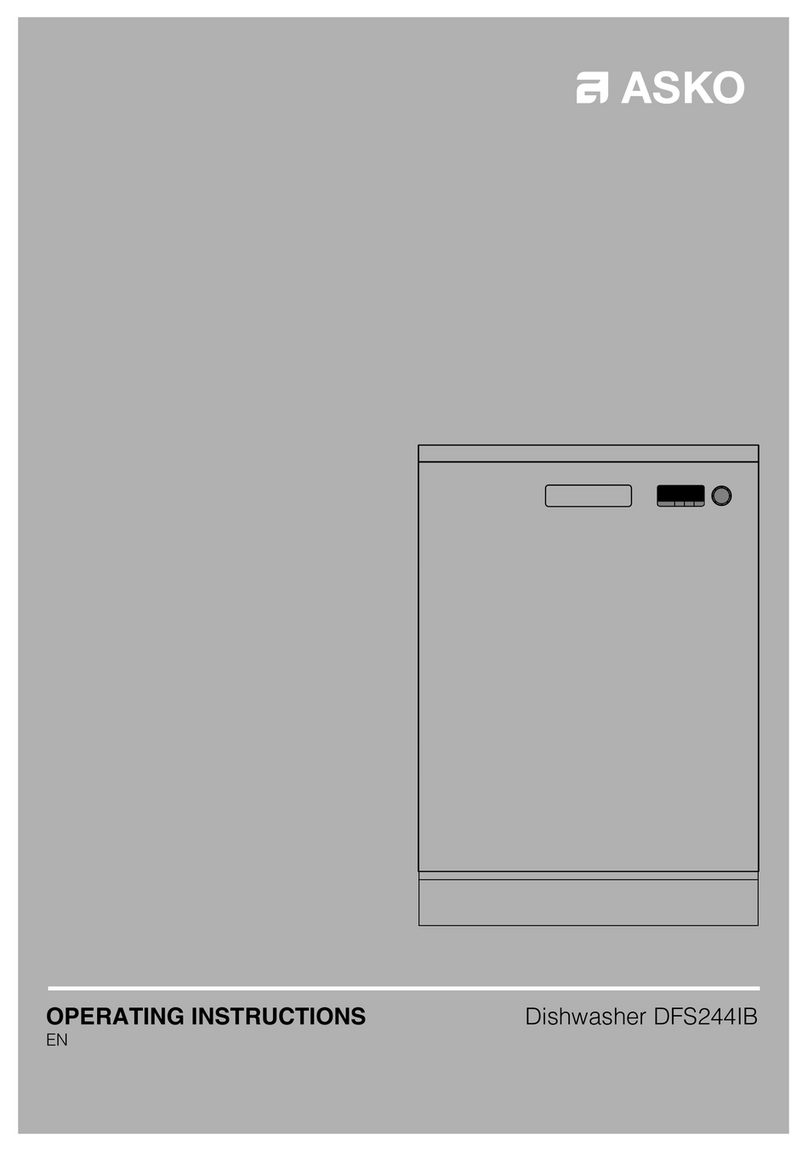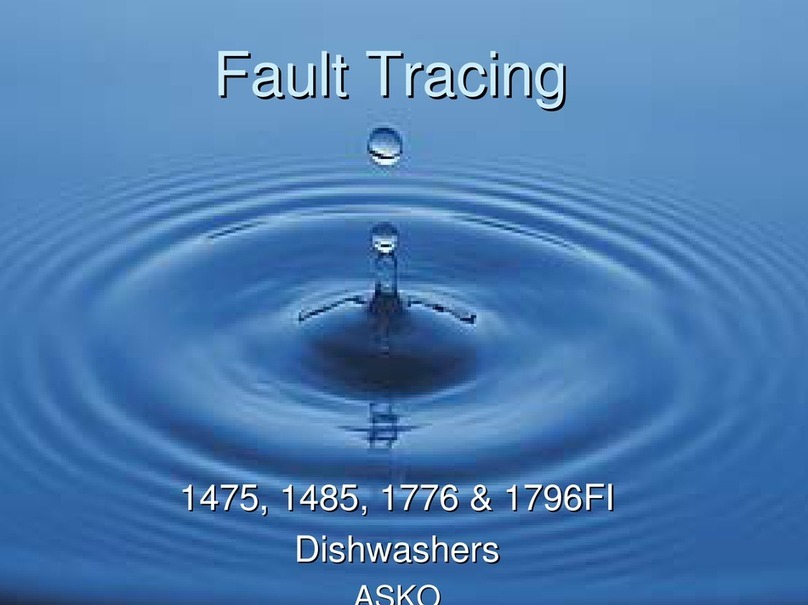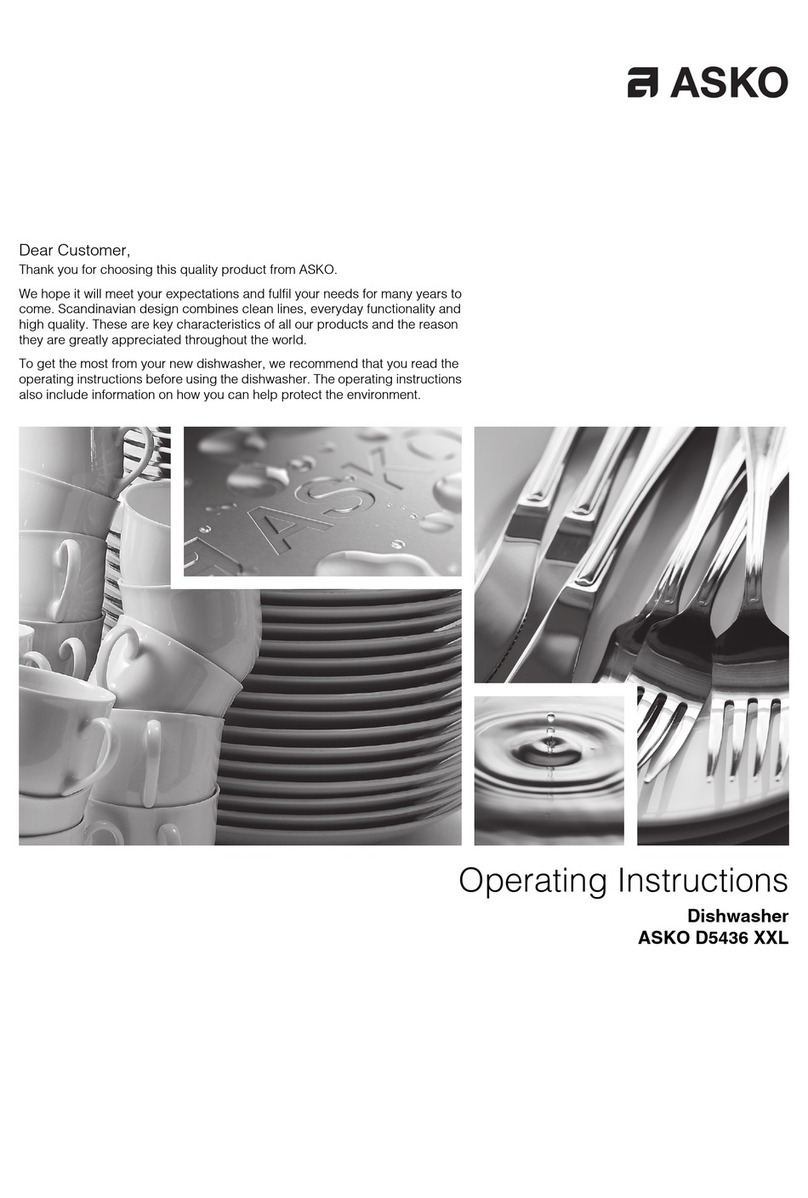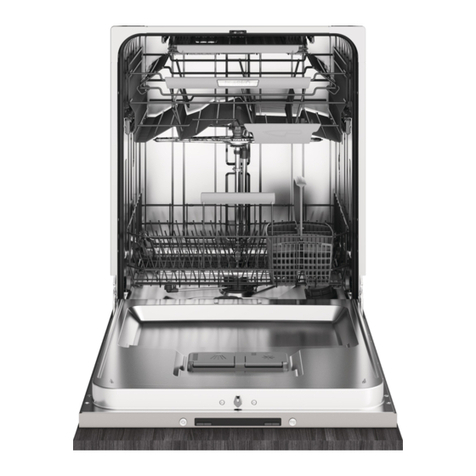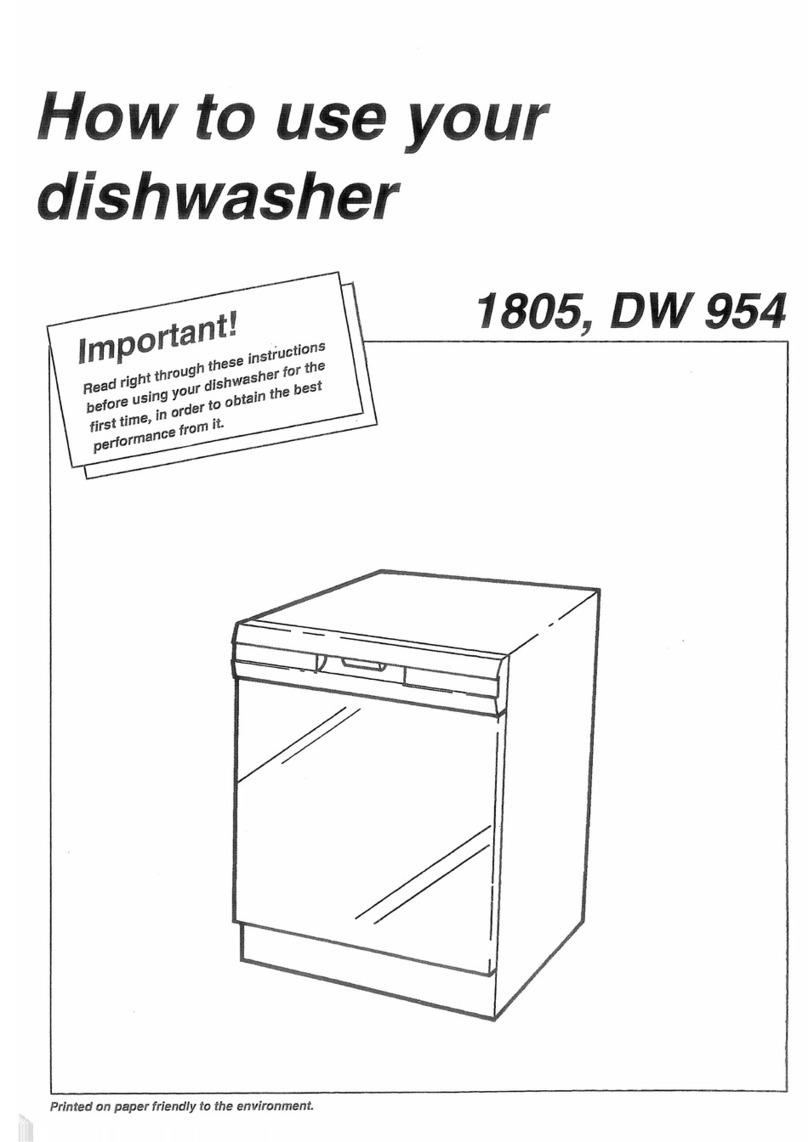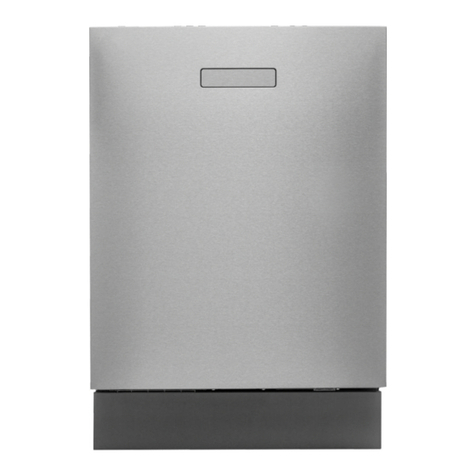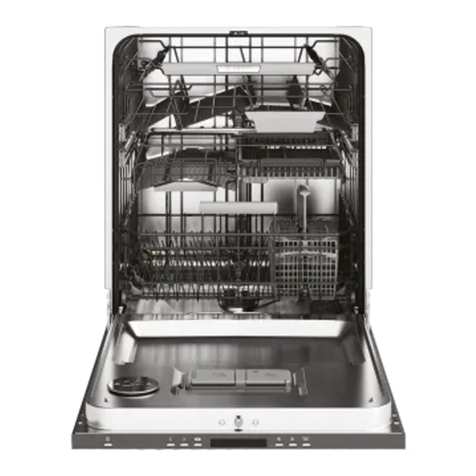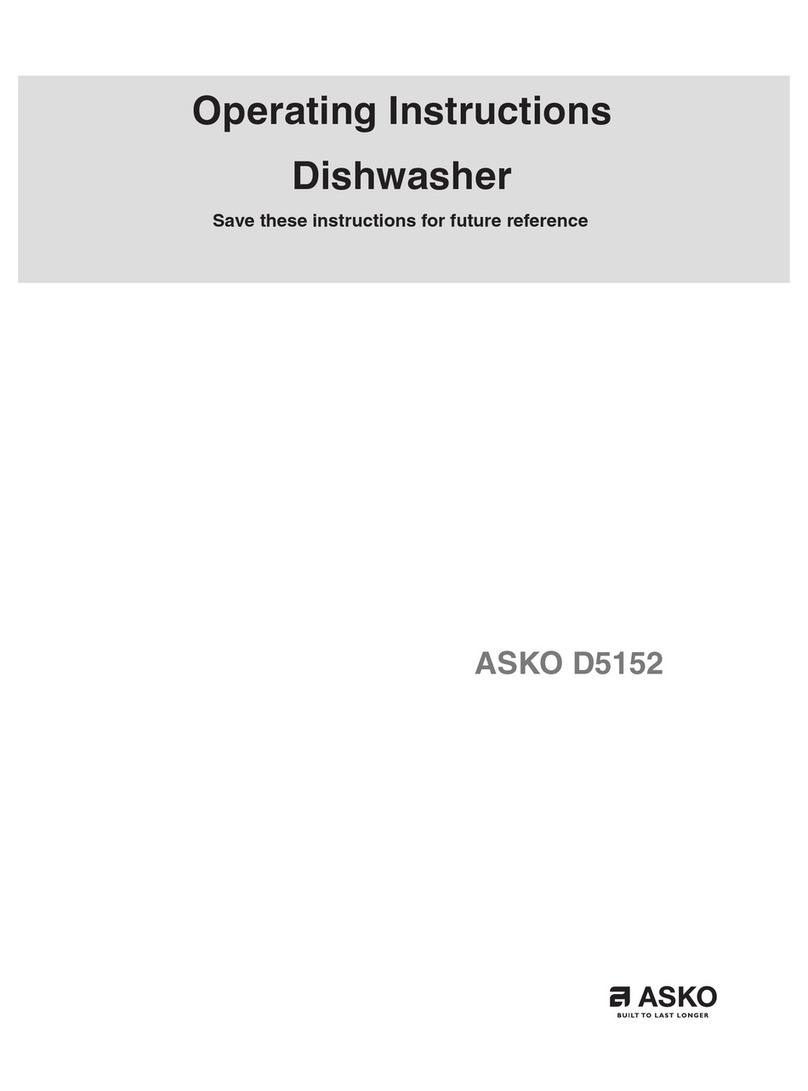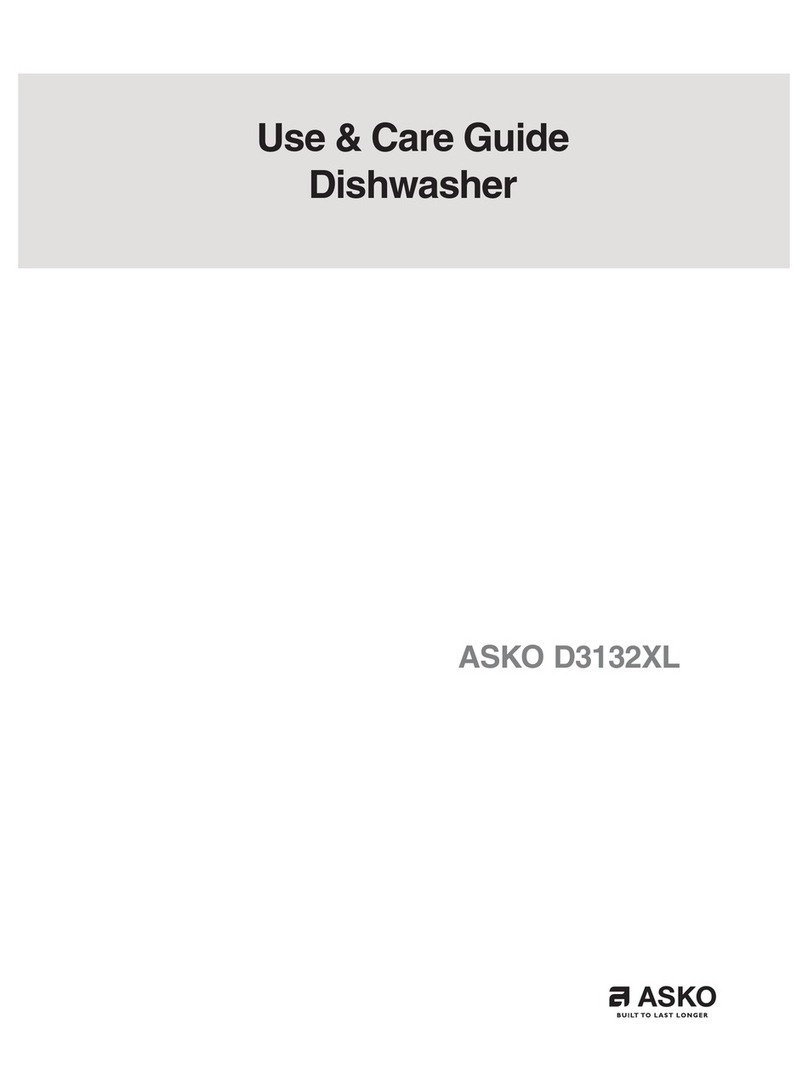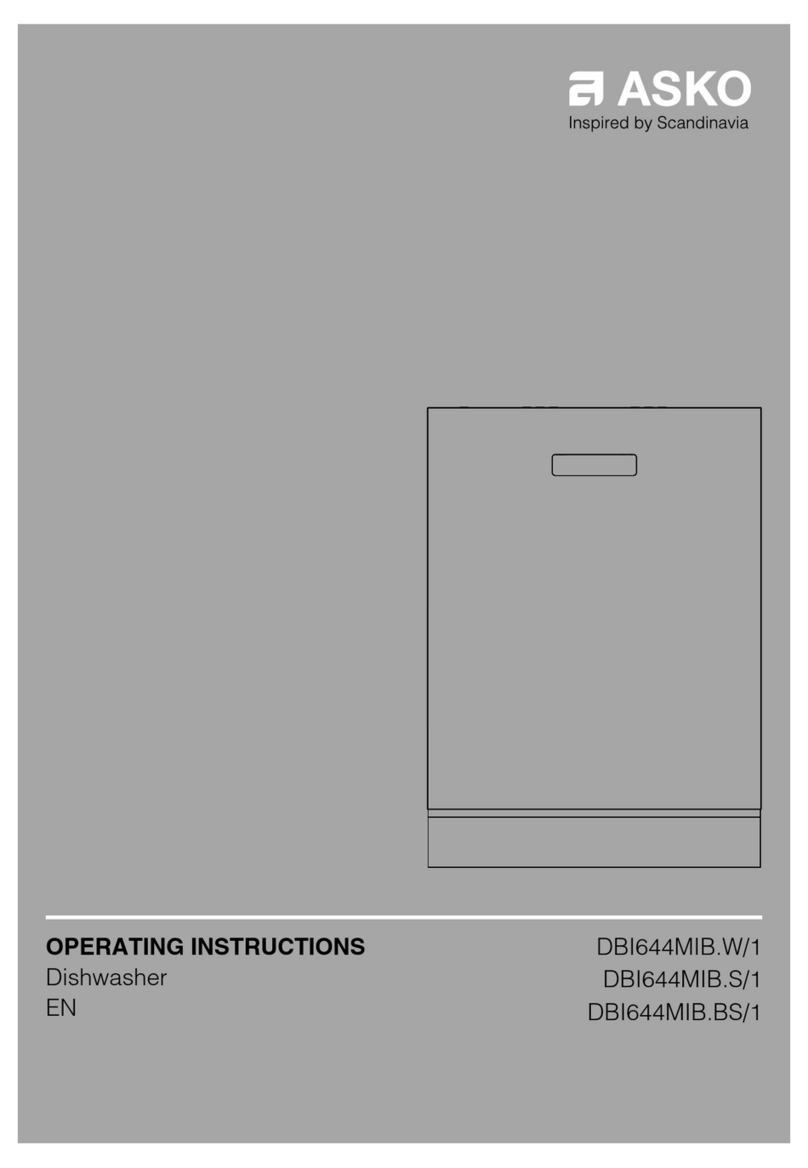Page 2 Customer Care Center
1-800-898-1879
www. askousa.com
This model has a child safety lock on the left of the door
handle. To activate the lock, press in the door handle
and use a screwdriver to turn the screw slot to a vertical
position. Reset it by turning the slot to its horizontal
position.
To open the door when the safety lock is engaged, press
the white plastic tab located to the left of the door handle
toward the left and hold it as you lift the door handle.
(See illustration at right.)
ENGAGING THE CHILD SAFETY LOCKENGAGING THE CHILD SAFETY LOCK
ENGAGING THE CHILD SAFETY LOCKENGAGING THE CHILD SAFETY LOCK
ENGAGING THE CHILD SAFETY LOCK
♦Dishwasher detergents and rinse aids are
corrosive, so always keep them out of reach of
children.
♦Should a child swallow dishwasher detergent or
rinse aid, give plenty to drink immediately, i.e., one
or two glasses of milk or water. Do not try to induce
vomiting. Call the National Capital Center at 1-800-
222-1222.
♦Always close the door and start the dishwasher as
soon as you put in the detergent.
♦Always keep small children away from the machine
CHILD SAFETY TIPSCHILD SAFETY TIPS
CHILD SAFETY TIPSCHILD SAFETY TIPS
CHILD SAFETY TIPS
when it is open. There may be some detergent
residue left inside the machine.
♦If dishwasher detergent gets in someone’s eyes,
rinsethemwithplentyofwater for at least15 minutes.
♦Do not allow children to use or play in or on the
dishwasher.
♦Load all long and sharp items in the knife/utensil
basket. If this is not possible, load sharp objects
with the pointed end facing the back of the
dishwasher. Sharp items loaded in the silverware
basket should be loaded with pointed ends down.
♦Engage the child safety lock. (See below.)
BEFORE USINGBEFORE USING
BEFORE USINGBEFORE USING
BEFORE USING YY
YY
YOUR NEW DISHWOUR NEW DISHW
OUR NEW DISHWOUR NEW DISHW
OUR NEW DISHWASHERASHER
ASHERASHER
ASHER
♦Read through this guide before attempting to use
your new dishwasher.
♦Read the “Washing Special Items” section before
washing any porcelain or china that has “on-glaze”
decoration, crystal glassware, or items of wood or
plastic.
♦Make sure the door is properly balanced. To do this,
open it a little and release it. It should stay where you
released it. If it doesn’t, consult the Installation
Instructions or contact your installer.
♦Call your local water company to learn the water
hardness in your area. You’ll need to know this to
determine how much detergent and rinse aid to use.
This manual does not cover all possible conditions and
situations that may occur. Common sense and caution
should always be used when installing, operating, and
maintaining any appliance.
♦Read all instructions before using the dishwasher.
♦Dishwashers must be electrically grounded. Read
the Installation Instructions for details.
♦Use the dishwasher only for its intended purpose.
♦Do not run the dishwasher while you are out of the
home.
♦Use only automatic dishwasher detergents and
rinse agents.
♦To reduce the risk of injury, keep detergents and
rinse aids out of the reach of children.
♦Do not load sharp items near the door; you could
damage the door seal.
♦Place sharp knives in the silverware basket with the
sharp ends down to avoid the risk of cut-type injuries.
♦Do not wash plastic items unless they are marked
“dishwasher safe” or the equivalent. For items not
marked, check the manufacturer’s recommendations.
Items not dishwasher safe could become deformed
or melt and create a potential fire hazard.
♦Donot touch the heatingelement during or imediately
after use.
♦Do not operate the dishwasher unless all enclosure
IMPORIMPOR
IMPORIMPOR
IMPORTT
TT
TANT SAFETY INSTRANT SAFETY INSTR
ANT SAFETY INSTRANT SAFETY INSTR
ANT SAFETY INSTRUCTIONSUCTIONS
UCTIONSUCTIONS
UCTIONS
panels are properly in place (i.e., guard plate, access
panel, toe kick, etc.)
♦Donot tamper with controlsbyremoving or changing.
♦Do not abuse, sit on, or stand on the dishwasher
door or baskets .
♦To reduce the risk of injury, do not allow children to
play in or on a dishwasher.
♦Under certain conditions, hydrogen gas may be
produced in a hot water system that has not been
used for two weeks or more. HYDROGEN GAS IS
EXPLOSIVE. If the hot water system has not been
used for two weeks, before using the dishwasher
turn on all hot water faucets and let the water flow
from each for several minutes. This will release any
accumulated hydrogen gas.As the gas is flammable,
do not smoke or use an open flame during this time.
♦When removing an old dishwasher from service or
discarding it, remove the door to the washing
compartment.
♦Do not store or use combustible materials, gasoline,
or other flammable vapors and liquids in the vicinity
of this or any other appliance.
♦Disconnect electrical power to dishwasher before
servicing.
♦Repairs should be done by a qualified technician.


